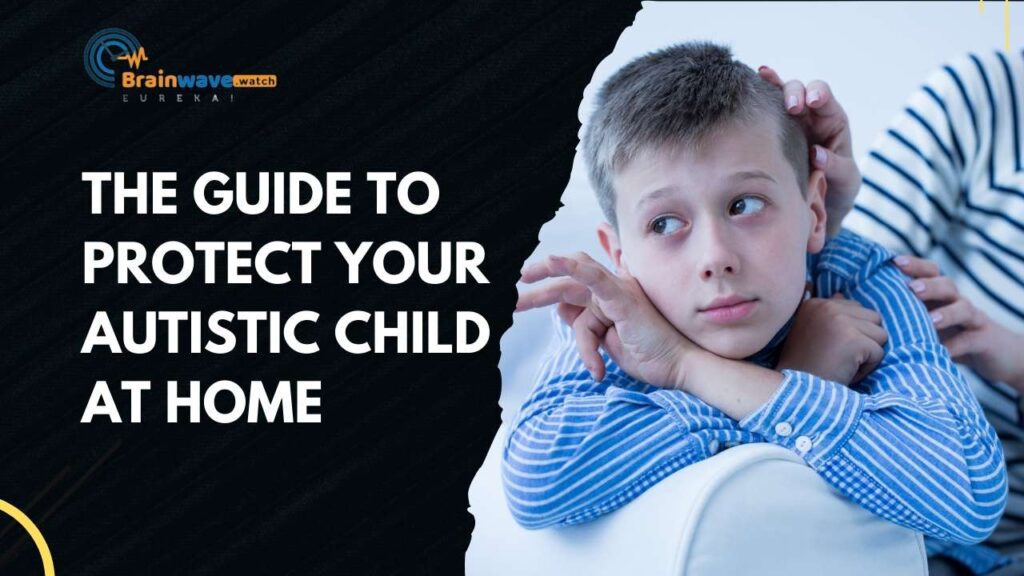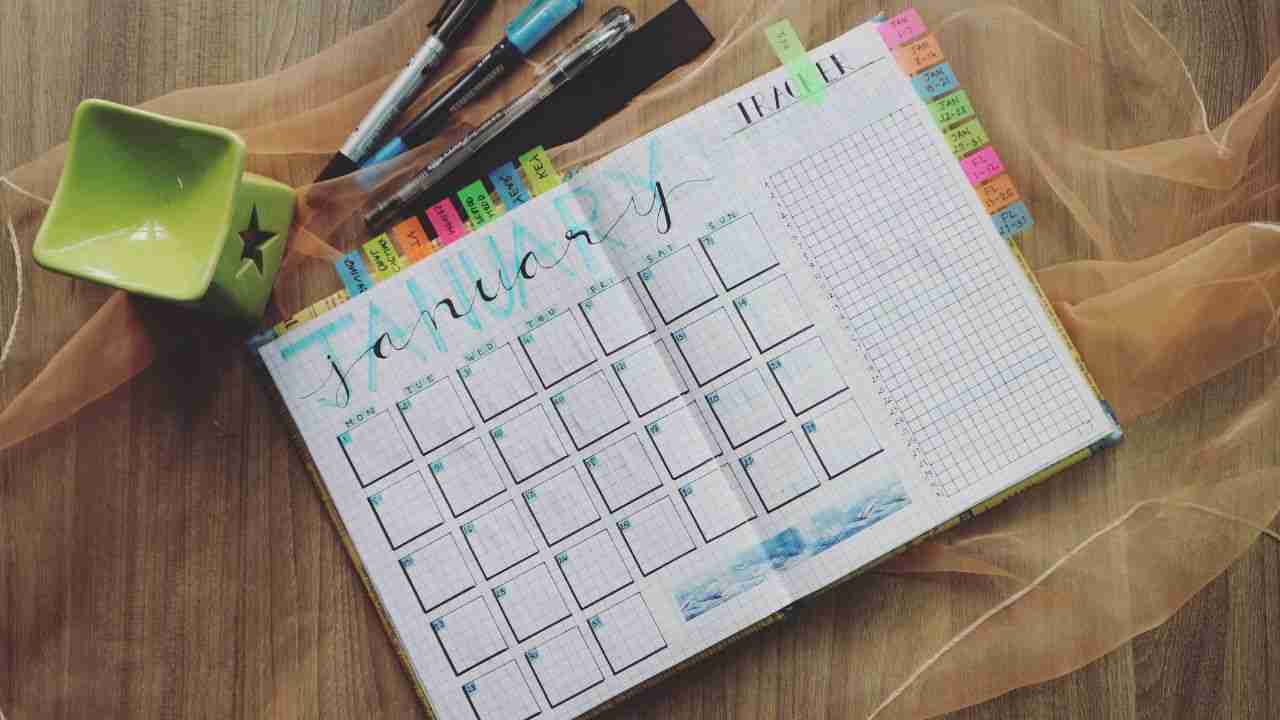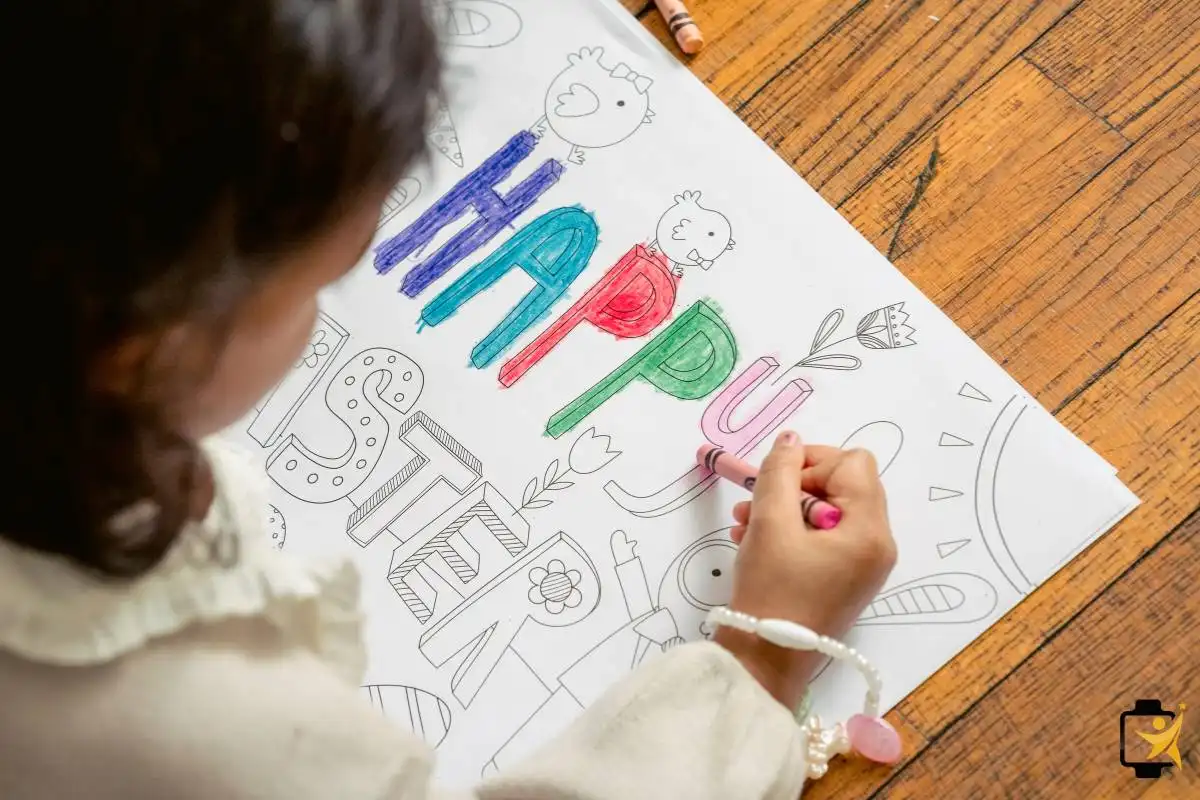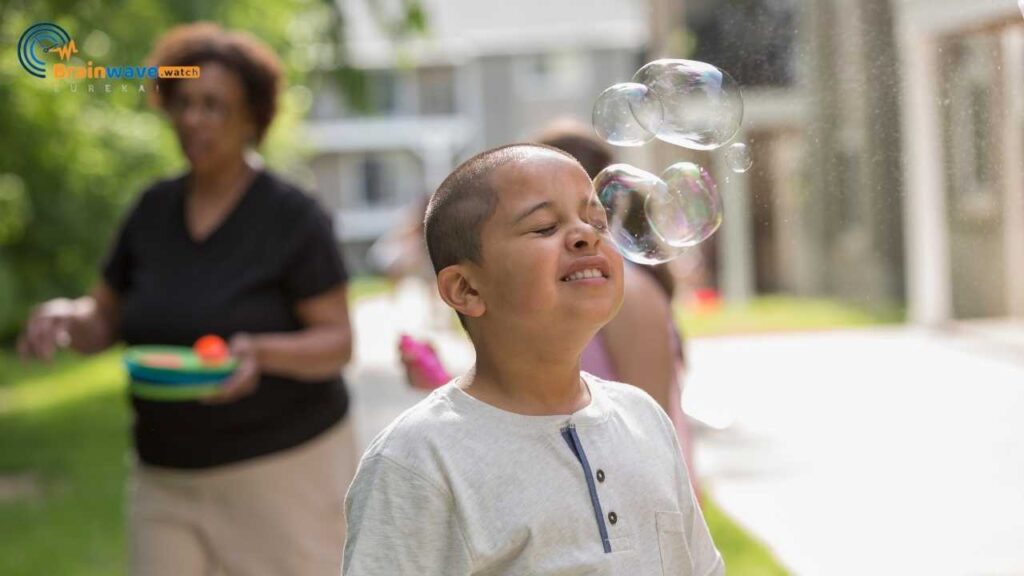Childproofing the home is one of the most important steps for keeping an autistic child safe. This involves making simple adjustments around the house to remove hazards and prevent access to dangerous areas. Some key childproofing tips include:
- Lock cabinets and drawers. Install child safety locks on any cabinets or drawers that contain medications, cleaning supplies, sharp objects, or other hazardous items. Choose locks that are high quality and tested to be difficult for children to defeat.
- Cover electrical outlets. Purchase plastic outlet covers or caps to prevent the insertion of objects into outlets. Ensure they are large enough to avoid being a choking hazard if removed by the child.
- Secure furniture. Use brackets, braces, or wall straps to anchor tall or heavy furniture items like bookshelves, dressers, and TVs. This prevents tipping if the child climbs on the furniture.
- Install safety gates. Use hardware-mounted safety gates at the tops and bottoms of stairs, as well as doorways leading to dangerous areas like the garage or basement. Choose gates designed for children with autism that have secure locking mechanisms.
Taking these proactive childproofing steps can significantly reduce safety risks and give parents greater peace of mind. Be sure to check regularly that all safety devices are working properly. As the child grows, reassess and adjust childproofing measures accordingly.
1. Establish a Routine
Maintaining a predictable routine is essential for helping an autistic child feel safe and secure at home. This provides structure and consistency that they can rely on day-to-day.
Visual schedules are extremely useful for establishing a routine. These break down a child’s daily activities into a sequence of visual steps. For example, a visual schedule may use pictures to walk through their morning routine of waking up, getting dressed, eating breakfast, brushing their teeth, and leaving for school. These schedules can be posted on the wall or refrigerator and referred to throughout the day. Using checkboxes or crossing off pictures provides a satisfying sense of completion as they progress through each task.
Timers and alarms are another great tool for building routines. Set a timer for transitions between activities or to alert a child that an activity is ending soon. Use alarms for scheduled daily events like mealtimes or bedtime. The auditory signal helps prepare a child for an impending change. Apps like Time Timer provide a visual countdown that decreases anxiety around transitions.
Predictability and consistency enable an autistic child to know what to expect throughout their day. Sticking to regular times for meals, school, therapies, playtime, etc. minimizes stress and promotes a feeling of safety at home. Any changes in routine should be discussed in advance using social stories. With structure and familiarity, a home can be a secure base.
2. Remove Hazards
Keeping your home safe for an autistic child starts with removing potential hazards. Two major areas of concern are cleaning products/medicines and small objects that can pose choking hazards.
Store cleaning products and medicines securely. Keep all household cleaners, chemicals, and medications locked up and completely out of reach of your child. Use safety latches on all cabinets containing these items. Consider keeping cleaning products in a locked utility closet. Never store dangerous items on low shelves or countertops.
Put away all choking hazards. Small objects like coins, marbles, batteries, and tiny toys can easily be swallowed by a young child. Do a sweep of the entire house and pick up any loose change, game pieces, art supplies like beads or buttons, and anything else small enough to lodge in your child’s throat. Store these items in closets or drawers with safety latches.
Scan for any broken toys or household objects with loose parts that could detach. Discard or repair anything that could come apart into small pieces. Pay special attention to button eyes on stuffed animals. Remove mobiles and crib toys when your child is unattended in their room.
By properly storing dangerous items and keeping choking hazards out of reach, you can create a much safer home environment for your autistic child. Supervision is still essential, but minimizing hazards is the first key step.
3. Monitor Diet
Avoiding certain foods can help reduce digestive issues, food sensitivities, and problem behaviors in autistic children. Some common triggers to watch out for include:
- Gluten – Many autistic children have gluten sensitivity or celiac disease. Gluten can cause gastrointestinal problems, skin rashes, anxiety, irritability, and attention deficits. Try eliminating gluten for 2-3 weeks to see if symptoms improve. Gradually reintroduce to determine tolerance level.
- Dairy – Lactose intolerance and casein allergies are common. Dairy may worsen diarrhea, constipation, gas, and bloating. Removing dairy may help with reflux, congestion, and ear infections. Try dairy-free alternatives like almond milk, coconut milk yogurt, and vegan cheese.
- Food dyes – Artificial food dyes like red 40, yellow 5, and blue 1 can negatively impact behavior. Dyes may increase hyperactivity, inattention, and aggressiveness. Avoid brightly colored processed foods, fruit snacks, cereal, candy, and drinks.
- Sugar – High sugar intake can lead to crashes, mood swings, and hyperactivity. Limit added sugars – opt for whole fruits over juice, and bake treats with natural sweeteners like honey or maple syrup instead of refined sugar.
- Caffeine – Can increase anxiety, insomnia, and hyperactivity. Avoid coffee, tea, soda, chocolate.
- Artificial additives – Preservatives, and flavor enhancers like MSG can trigger headaches and GI issues. Stick to simple whole foods. Read labels carefully.
Work with your pediatrician and keep a food diary to identify problematic foods for your child. An elimination diet can help reveal subtle intolerances. Provide healthy alternatives to minimize tantrums and limit rewards involving restricted foods.
4. Provide Comfort Items
Comfort items can help soothe an autistic child and reduce anxiety. Consider providing:
- Weighted blankets – These blankets apply gentle, even pressure across the body. This type of deep-pressure stimulation can have a calming effect. Choose a weight of approximately 10% of your child’s body weight.
- Noise-cancelling headphones – Many autistic children are sensitive to loud noises. Noise-cancelling headphones help block out overwhelming sounds and allow them to focus. Look for kid-sized headphones that are comfortable.
- Chewelry – Chewelry refers to jewelry or accessories that are safe for chewing on. The chewing motion can be calming and provides oral sensory input. Make sure any chewelry is BPA-free and supervision is provided.
Having access to preferred comfort items can help autistic children self-soothe, especially when they feel anxious or overwhelmed. Work with your child to identify which types of items are most effective.
5. Utilize Visual Aids
Visual aids like picture schedules, first-then boards, and feelings charts can be extremely helpful for autistic children.
a. Picture Schedules
A picture schedule uses images to clearly show the child the sequence of activities for the day. This reduces anxiety by allowing the child to anticipate transitions ahead of time. Start with a simple schedule showing just a few activities. Gradually add more pictures as the child gets used to following the schedule. Velcro or laminated cards work well so the schedule can be adjusted as needed. Place the schedule in an easily accessible location. Review it with the child each morning and refer to it frequently throughout the day.
b. First Boards
First boards provide positive reinforcement by showing that an unpleasant or difficult task will be followed by something enjoyable. For example, show a picture of brushing teeth followed by a picture of playground time. Allow the child to remove the “first” picture after completing the task, revealing the preferred “then” activity. Gradually phase out the board as the child adapts.
c. Feelings Charts
Feelings charts help autistic children identify and express emotions. Simple charts could include illustrations of faces showing basic feelings like happy, sad, angry, etc. More advanced charts may use photographs or add additional descriptors. Refer to the chart to reinforce identifying feelings in themselves, others, and characters in books/media. Place charts in areas where meltdowns often occur as a tool to promote communication.
6. Reinforce Positive Behaviors
Children with autism often struggle with communication, social skills, and behavior. As a parent, it’s important to reinforce positive behaviors to help encourage your child’s development. Here are some tips:
- Implement a reward system. Use a sticker chart, points, or small treats to reward good behavior. For example, give your child a sticker when they use words instead of crying to communicate. Over time, build up to bigger rewards like a special outing or toy. This helps motivate positive behaviors.
- Provide verbal praise. Be specific with praise so your child knows exactly what they did well. Say things like “I love how you used your words to ask for juice!” Praise efforts, not just outcomes.
- Highlight strengths. Note what your child excels at, like art, math, or music. Find ways for them to engage with their strengths often to build confidence. Share their talents with others.
- Model desired behaviors. Demonstrate polite manners, listening, sharing, and other positive social skills. Children are always observing our example.
- Choose your battles. Don’t sweat the small stuff. Pick key behaviors to reinforce. Let minor things go to avoid frustration.
Reinforcing positive behaviors takes patience, but it teaches important life skills. Focus on progress, not perfection. Celebrate each step to help your child thrive.
7. Manage Meltdowns
Meltdowns are emotional outbursts that can occur when an autistic child feels overwhelmed by their surroundings. It’s important to properly manage meltdowns to keep the child safe. Here are some tips:
Remove stimuli. Take the child to a quiet, low-stimulation room or area. Turn off loud music, bright lights, or noisy electronics. Reduce excessive noise and movement around the child. This removes potential triggers and allows the child to calm down.
Provide comfort items. Offer the child squeeze toys, soft blankets, or other preferred items. These can soothe them during the meltdown. Weighted blankets provide comforting pressure. Fidget toys give their hands something to focus on.
Remain calm. Speak in a gentle, soothing tone of voice. Avoid yelling or raising your voice as this can further upset the child. Stay relaxed in your body language. Your calm presence reassures the child and models appropriate responses. Don’t restrain the child unless necessary to prevent self-injury.
Properly managing meltdowns keeps the child from harm and teaches them to eventually self-soothe. Pay attention to triggers to prevent meltdowns proactively. Keep a log to identify patterns. With time and consistency, you can help reduce the frequency and severity of meltdowns.
8. Establish Open Communication
Maintaining open communication with your child’s support team is crucial for keeping an autistic child safe at home. Schedule regular meetings with your child’s therapists, teachers, and other care providers to discuss your child’s progress and any concerns.
These meetings allow you to:
- Provide updates on your child’s behaviors, challenges, and successes at home. The therapists can then reinforce positive behaviors and strategies to address difficulties.
- Learn tips, techniques, and strategies from experts that you can implement at home. This helps create consistency across environments.
- Discuss any safety concerns related to your home environment. Therapists may suggest adaptations to reduce risks.
- Develop an action plan for handling safety issues like wandering, meltdowns, self-harm, or aggression. Make sure all caregivers know how to respond.
- Ask questions and get expert advice. Voice concerns early before small issues become big problems.
- Coordinate with the team to identify potential safety hazards and make environmental modifications.
Having an open dialogue with your child’s full support team is key to discussing safety concerns, getting guidance, and working together to keep your autistic child safe and thriving at home.
9. Emergency Preparedness
Having an emergency plan in place is crucial for keeping an autistic child safe. This involves being prepared for medical emergencies as well as having strategies to deal with unexpected situations.
- Medic-alert jewelry – Have your child wear a medic-alert bracelet or necklace that identifies them as autistic. This will alert first responders about your child’s condition in case of an emergency. Include any other relevant medical information as well.
- Emergency contacts – Make sure your child’s school, doctor, and caregivers all have updated emergency contact information. Provide phone numbers where you can be reached at all times. Also, include contacts for relatives or friends who could assist your child if you are unavailable.
- Social stories – Create social stories to help prepare your child for emergencies like fire drills, severe weather events, or medical emergencies. Reading these stories repeatedly will help reduce anxiety when real emergencies occur. Use simple language and pictures to explain what to expect and how to appropriately respond.
Having preventative measures and contingency plans in place will help you respond effectively if an emergency arises. This will give your autistic child the support they need to stay calm and safe.
















